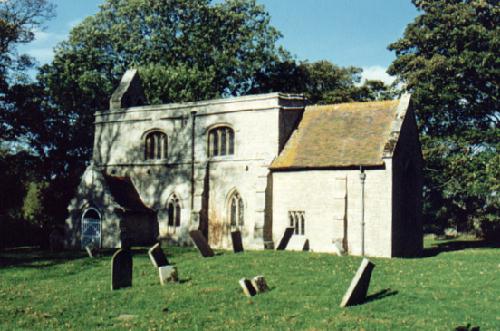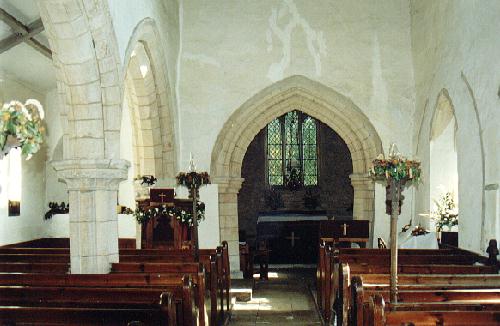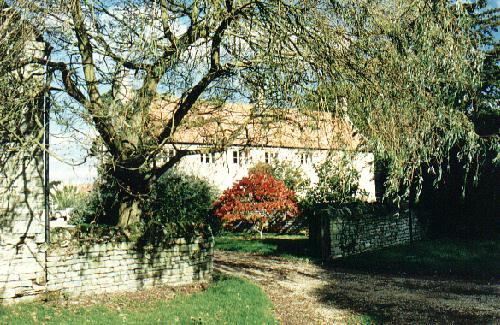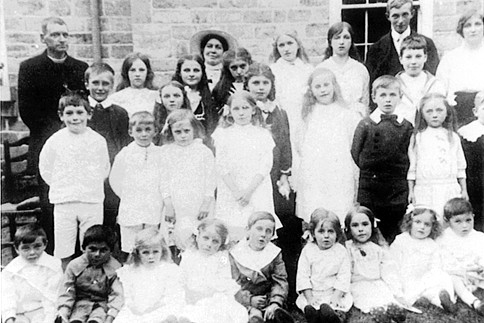|
Braceby
 |
|
One of the most
attractive houses in South Lincolnshire is here at Braceby |
The names sound alike and therefore we imagine Braceby to be forever linked with Haceby and indeed they are only a mile or so apart but there the connections end. Haceby is almost no more, apart from its church and one or two dilapidated buildings, but Braceby, although also small, has a confident air of care and continual maintenance that augers well for its future as a very beautiful village in this part of unwrecked Lincolnshire. The name Braceby is Danish in origin but the Romans were evident in the area long before and a Roman road from Bourne to Ancaster passed only half a mile to the west. The Domesday Book of 1086 records the land at Braceby and Sapperton belonging to the king, the Bishop of Durham and Ivo Tallibois, the cruel Angevin who ruled his domain from Spalding.
Here is a little cluster of red-tiled stone cottages grouped around a delightful little church that stands in the middle of a well-tended but not fussily trimmed churchyard. It has a 13th century double open and gabled bellcote, dwarfed by the surrounding sycamore and horse chestnut trees, with two ancient bells, both
re-hung in 1985. One of them, the north tenor bell has a diameter of 24 inches and weighs 2½ cwt and dates from the 15th century while the other, the south treble bell, has straight sides that suggest an earlier origin and has been dated 1200, making it the second oldest bell in the Diocese of Lincoln, and was probably cast on site by itinerant bell founders.
 |
 |
|
St Margaret's with
its gabled bellcote (left) and the ancient chancel arch (right) |
St
Margaret's Church has a 13th century chancel arch and north arcade, a plain round 14th century font and a 15th century clerestory while in the south wall are the three arches of a vanished aisle and by the pulpit is the old iron stand once occupied by an hourglass to enable the preacher time his sermon. In 1966, this church was included in the official list of buildings of special architectural and historical interest.
This is such an attractive village that it is difficult to believe that in the 1970s, almost half of the houses were empty and many of the others were in a poor state while the population had fallen from around 100 at the beginning of the century to less than 20. Braceby had been given up as lost and allowed to slumber on into gradual decay. But there was a remarkable revival in its fortunes over the following decade through the rehabilitation of old dwellings and the regeneration of the community spirit. The land hereabouts had long been owned by the Welby family of Denton and it was the sale of old buildings in the village by the Welby Estate in 1972 and 1977 that started the village renewal.
 |
|
The Manor Farm that
dates back to 1653 |
Close by the church is Manor Farm, the most imposing house in the village and dated 1653, with a remarkable regular front. It has two storeys and six bays and the fifth is the doorway with a four-centred head, while to its left and right are evenly placed mullioned windows of three lights on both floors. This is one of three farms in the village and another, College Farm, took its name from its ownership by one of the Oxford colleges and has a barn bearing the date 1677. Church Farm is believed to be even older. Today, farming is the only business in the village although during the 19th century, when the population was over 150, Braceby could boast several other trades including a butcher and a shoe maker. Only the blacksmith's and carpenter's shops survive as reminders of their former activities.
|
BRACEBY IN PAST TIMES |
|
 |
|
The Rev Augustus Outram with his wife Rose and members of the Sunday School
during the annual treat in the vicarage gardens at Braceby in 1917. The
children came from Braceby and the nearby village of Sapperton. Mr Outram
was the brother of the Rev Edmund Outram, Rector of Ropsley from
1897-1929, and served as Vicar of Braceby from 1908-1917. In 1900, he had
married Rose, daughter of the Rev E Price, his predecessor as Vicar of
Braceby who served the parish from 1890-1907. |

Go to:
Main Index Villages
Index
|




